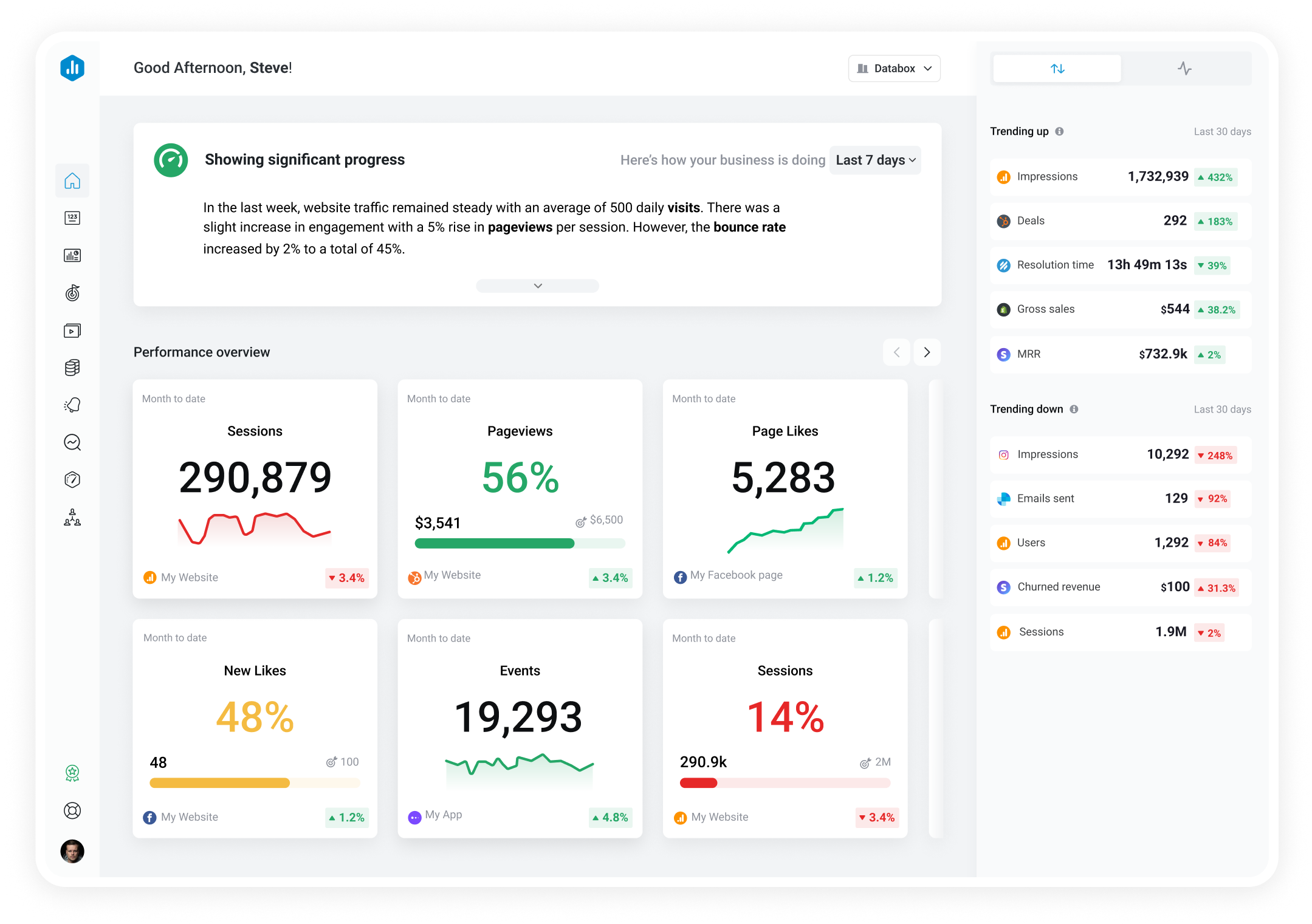Track all of your key business metrics from one screen
GET STARTED
 Xero
Total Assets
Xero
Total Assets Total Assets represents the total value of an organization's resources, including cash, accounts receivable, inventory, property, and equipment.
With Databox you can track all your metrics from various data sources in one place.

Used to show a simple Metric or to draw attention to one key number.
Databox is a business analytics software that allows you to track and visualize your most important metrics from any data source in one centralized platform.
To track Total Assets using Databox, follow these steps:
 Goals
Goals Scorecards
Scorecards Metric Digest
Metric Digest Metric Builder
Metric Builder Data Calculations
Data Calculations Performance Screen
Performance ScreenThe Xero Balance Sheet Overview dashboard provides insights into assets, liabilities, and equity trends. It includes key financial metrics like liquidity, solvency, and profitability ratios, along with a breakdown of current assets and liabilities.

This report gives a snapshot of financial results using Xero data on income, expenses, cash flow, balance sheet, and overall financials, supporting informed financial decisions.

